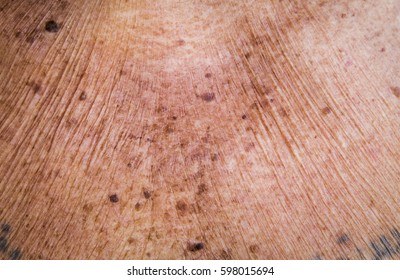
See all those spots? That's a compound called "Lipofuscin", and it's not just a cosmetic problem.

What is this stuff and why do we get it then?
Imagine you get a newspaper delivered to your house every day. It's rolled up and tied with a bit of string. Everyday, you pop off the string and read it. Then you use the paper for wrapping stuff, or painting, or start fires with it, or just toss it out.
But you strangely decide to just keep the string.
70 years later, your house is full of this damned string.
You get the idea.
The compound clumps up around cell nucleus locations. You can see it by the purple dark ones in the heart muscle slide. This happens in every major organ system, the eyes, brain, the skin, etc. It causes a slew of old age diseases. And we have no treatment for it whatsoever.
This is an example of what we in the business call a "deposition" disease. It's one of many.
Any effort to extend lives will run up against these things. So solving them is a big, big deal for the longevity research people.
Last edited:
